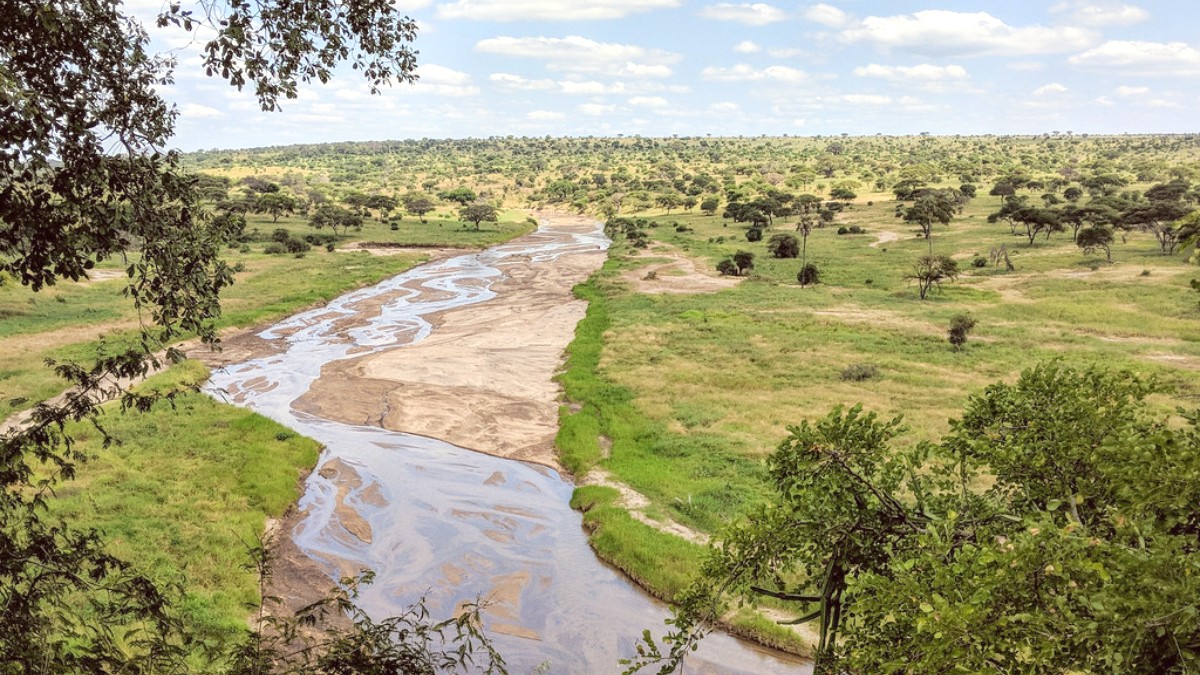
Northern Tanzania, Tanzania
Long Dry Season (June - October): This period brings comfortable daytime temperatures, typically ranging from 20-25°C (68-77°F). Nights can be cool, dropping to 10-15°C (50-59°F), especially at higher elevations or on safari. Humidity is low, and rainfall minimal, making for clear skies. Many find this period comfortable for outdoor activities.
Short Rains (November - December): Expect brief, intermittent showers, usually in late afternoon or evening. These rains typically do not disrupt travel plans. Temperatures remain warm, ranging from 25-30°C (77-86°F).
Short Dry Season (January - February): This period is hot and dry, with daytime temperatures frequently exceeding 30°C (86°F). This is a second peak safari season due to clear conditions and concentrated wildlife around water sources.
Long Rains (March - May): This marks the heaviest rainfall. Downpours can be torrential, but rarely last all day. High humidity characterizes these months. Temperatures generally hover around 20-25°C (68-77°F). Roads in national parks can become challenging to navigate, sometimes impacting safari routes. Heavy rains might make some roads impassable, especially in parks.
June - October; Jan - Feb
Optimal wildlife viewing. Animals gather around diminishing water sources, making them easier to spot. Comfortable temperatures, clear skies.
Higher prices for safaris and accommodations. Parks and lodges experience more visitors. Requires booking well in advance.
November - Mid-December
Fewer crowds, often lower prices. The landscape becomes lush and green. This period presents great birdwatching. Short rains are generally manageable.
Intermittent rain can make some dirt roads challenging. Weather patterns are less predictable than in the dry seasons.
March - May
Lowest prices for safaris and accommodation. Landscapes are lush and green, offering excellent photography. Great birdwatching. Calving season in Serengeti (March). Fewer tourists, a more private experience.
Heavy rains might make some roads impassable, especially in parks. High humidity. Some remote lodges may close.
These figures are approximations; they may vary based on your choices.
Budget Traveler: USD 50-100 (Hostels, local eateries, public transport, shared budget camping safaris).
Mid-range Traveler: USD 150-300 (Mid-range hotels, comfortable guesthouses, mid-range restaurants, shared lodge safaris).
Luxury Traveler: USD 400+ (Luxury lodges, boutique hotels, exclusive tented camps, fine dining, private safari vehicles, internal flights between parks, specialized tours).
Hostel/Guesthouse: USD 15-40 | Mid-range: USD 70-250 | Luxury: USD 300-1000+
Local Eatery: TZS 3,000-8,000 (USD 1.20-3.20) | Mid-range: TZS 15,000-35,000 (USD 6-14) | Fine Dining: TZS 50,000-100,000+ (USD 20-40+)
Dala-dala: TZS 500-1,000 (USD 0.20-0.40) | Bajaj: TZS 3,000-8,000 (USD 1.20-3.20) | Taxi (in Arusha): TZS 10,000-30,000 (USD 4-12) | JRO to Arusha taxi: USD 40-60
Arusha National Park Entry: USD 50+VAT (adult) | Natural History Museum: TZS 10,000 (non-resident adult)
USD 150-500+ per person per day (included in tour package, depends on itinerary).
Clear understanding of visa and entry requirements helps avoid arrival delays in Tanzania. Arrange these well before your trip.
Most non-African nationalities require a visa to enter Tanzania. Confirm specific requirements for your nationality. The Tanzanian government advises e-Visa applications online via the official Tanzania Immigration Department website.
Prepare your documents carefully. Have both original and copies available.
Proactive steps help minimize risks and prepare for potential issues.
Tanzania sits in an active seismic zone; minor tremors may occur. During the long rainy season (March-May), flash floods might occur, especially in low-lying areas or on rural roads.
Stay informed about local weather conditions if traveling during the wet period.
Floods may disrupt travel plans or make some routes impassable.
Arusha has several reputable hospitals (e.g., Arusha Lutheran Medical Centre, Selian Lutheran Hospital) with English-speaking staff for common medical issues and emergencies. Pharmacies are available, but stock varies.
For emergencies, private transport to a hospital is often quicker. Keep original vaccination card.
For severe conditions, medical evacuation to Nairobi or South Africa may be needed. SafetyWing and Insubuy are options for medical coverage.
Purchase comprehensive travel insurance before your trip. Your policy must cover medical emergencies, emergency medical evacuation (which can be very expensive without insurance), trip cancellation or interruption, and baggage loss or delay. World Nomads is a popular choice for adventure travelers.
Confirm your policy covers specific planned activities like safaris, high-altitude trekking, or adventure sports.
Animal bites or scratches require immediate medical attention due to rabies risk.
| Service | Number | Notes |
|---|---|---|
| Police | 112 | General emergency number, response times may vary. |
| Ambulance / Fire | 112 | Direct hospital contact often more effective for medical emergencies. |
| Your Embassy / Consulate | Country Specific | Keep contact details ready for lost passport, arrest, or serious issues. Most are in Dar es Salaam. |